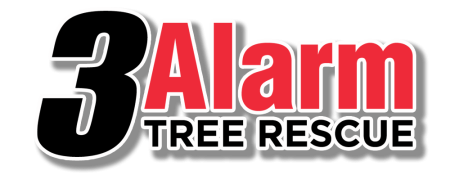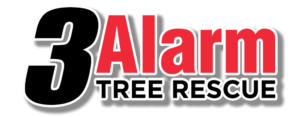3 Reasons Homeowners Should Leave Tree Work to the Professionals
Hey, DIYers!
For the “do-it-yourself” homeowner, outsourcing tree work to professionals may seem like an unnecessary expense. The costs of doing tree care on your own can also be high. With damaged property, hospital bills, and a ruined landscape these expenses aren’t cheap. “Most homeowners simply don’t have the tools, knowledge or experience necessary to safely attempt their own tree work, as a firefighter and paramedic, I see firsthand what happens when homeowners attempt this work themselves or have lawn care guys trying to do the tree work,” says Richard Hancock, certified arborist and owner of 3 Alarm Tree Rescue.
3 Reasons To Leave Tree Work to the Professionals

#1- Lack of Knowledge and Training
Safe tree work requires extensive knowledge of tree physics and biology, which takes years of experience to acquire. For example, felling a tree in a controlled manner is not as simple as cutting through the trunk with a chain saw. It requires establishing a drop zone, precise cuts and sometimes guiding the tree safely to the ground. When homeowners attempt this, many are injured or killed when the tree falls in an unexpected direction.
Up-ended root plates or root balls are also unpredictable. Severing the trunk of a fallen tree from an up-ended root plate releases tension, which may be strong enough to pull the stump and root ball back into the hole, trapping anything or anyone nearby underneath it.
Other hazards may be invisible to the untrained eye. Rotten trunks and limbs, pest and fungal infestations and other diseases and defects can only be identified and treated by an experienced tree-care practitioner.
#2- Poor Situational Awareness
Even homeowners who know their way around trees may still fall victim to nearby hazards. Electrical wires are a common situational hazard in tree work; many trees grow near power lines and have their branches, leaves, and limbs entangled in live wires. Each year, a number of amateur tree workers are seriously injured or killed. This usually occurs when they come into contact with an energized line, directly or indirectly, through tools or tree limbs. Navigating this danger is tricky, even for professionals, and should never be attempted by homeowners under any circumstances. Attempting do-it-yourself tree work is bad enough, but some homeowners go one step further and try to finish the job alone, which further impairs situational awareness. You should always leave tree work to professionals. If you do try to do any of the work, always make sure there is at least one other person working with you. Even trained professionals work in teams!
#3- Improper Use of Tools
Homeowners who use incorrect, faulty or complicated tools may hurt themselves and others while attempting tree work. Chain saws, for example, are incredibly dangerous and easy to misuse. A common mistake is to use a dull chain, which forces the operator to use excess pressure, causing them to lose control of the saw. Many homeowners also make the mistake of using the chain saw to cut branches on the ground. This can result in chain saw kickback – and injuries – when the bar tip hits the dirt or other foliage. Misused ladders are another common source of injury. Using a ladder that is too short, set on unstable ground, or supported by a faulty limb can easily result in the homeowner falling – often fatally – from the tree. Falling limbs can also knock out a ladder from under the homeowner as well. Tree work may also require tools the average homeowner does not own. Stump grinders, wood chippers, and aerial lifts are just a few examples of complex machines that only a trained arborist can handle.
When doing tree work, 3 Alarm Tree Rescue works in a careful and efficient manner, sometimes utilizing a crane and large equipment for safety and reducing costly man hours. Our arborists are highly trained tree experts and are required to attend classes to keep up with ANSI A300 and International Society of Arboriculture standards. We also require our arborists to be a certified high angle rescue technician before they are able to climb for any tree removal. This protects you, your family and your property. We recommend you ask a professional that is trained to assist you with your tree work.





